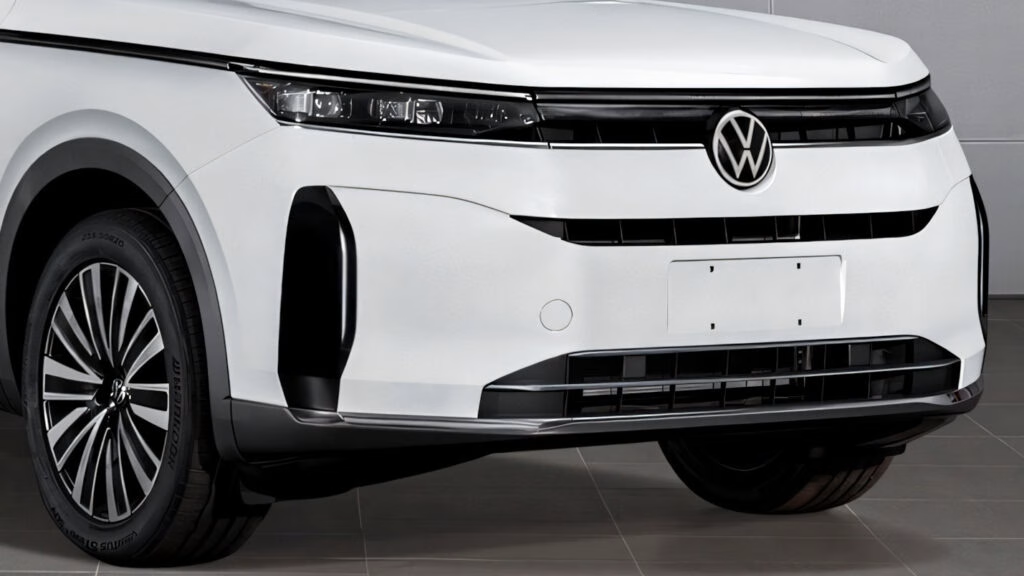What’s Changed in the 2026 Volkswagen Tavendor Facelift for China?
If you’ve ever tried to keep up with Volkswagen’s sprawling SUV lineup, you know it’s a bit like chasing a moving target—especially in China, where region-specific models pop up faster than you can say MQB Evo. The Tavendor, a full-size SUV built exclusively for the Chinese market by FAW-Volkswagen, has just received a mid-cycle refresh. But what’s actually new, and does it move the needle for buyers who want something a little different from the usual VW fare?
How Does the New Tavendor Stand Out Visually?
Volkswagen didn’t just slap on a new badge and call it a day. The 2026 Tavendor sports a noticeably sharper look, with design cues that might make you do a double-take. In fact, some enthusiasts have pointed out that the chrome trim running across the hood’s shut line and the bold, protruding grille emblem wouldn’t look out of place on a Peugeot or Citroen—both part of the Stellantis group. It’s a subtle nod to European flair, and whether that’s a good thing or not depends on your taste.
Up front, the lower grille section is gone, replaced by vertical air inlets that give the bumper a more sculpted, upright feel. The headlights keep their familiar shape but get updated internals for a sleeker, more modern vibe. Walk around to the back and you’ll spot new graphics for the full-width LED taillights and hidden exhaust outlets, cleaning up the rear profile. In profile, though, the Tavendor sticks to its guns—no major changes there.
Is the R Line Version Really Sportier?
Volkswagen’s R Line trim has always been about injecting a bit of attitude, and the Tavendor’s facelifted R Line is no exception. Expect a more aggressive lower intake with honeycomb mesh, unique alloy wheels, and a body-colored rear bumper insert. Roof rails and a contrasting roof option carry over, so you still get that two-tone look if you want it. These tweaks don’t just look good—they help the Tavendor stand out in a crowded segment where sporty trims are often more about marketing than substance.
Where Does the Tavendor Fit in VW’s Chinese Lineup?
The Tavendor slots neatly between the Tayron and the Talagon in Volkswagen’s China portfolio. At 5,007 mm (197.1 inches) long, it’s 50 mm longer than the outgoing model, but the wheelbase remains a generous 2,980 mm (117.3 inches). That means plenty of space for families or anyone who likes to stretch out on a road trip. The MQB Evo architecture underpins the whole thing, so you’re getting the latest in VW’s modular platform tech—think improved rigidity, safety, and ride comfort.
What’s Under the Hood—And Does It Matter?
Here’s where things get interesting. The flagship Tavendor 450 TSI now boasts a beefed-up 2.0-liter turbocharged four-cylinder engine, delivering 270 hp (200 kW / 272 PS). That’s a solid 50 hp jump over the previous version, and it should translate to noticeably better acceleration and highway passing power. The 380 TSI model sticks with a different 2.0-liter turbo unit producing 211 hp (157 kW / 214 PS). Both engines are paired with VW’s familiar transmission setups, promising smooth shifts and decent efficiency for a vehicle of this size.
Why Is the Tavendor Only Available in China?
Volkswagen’s strategy in China is all about tailoring vehicles to local tastes and market demands. The Tavendor is a prime example: designed, built, and sold exclusively in China by FAW-Volkswagen. There are no plans to export it, and that’s unlikely to change soon. The Chinese SUV market is fiercely competitive, with buyers expecting features and styling that sometimes diverge from what’s popular in Europe or North America. By focusing on local needs, VW keeps its edge in the world’s largest auto market.
How Does the Tavendor Compare to Rivals?
The Chinese SUV landscape is packed with both international and domestic contenders. The Tavendor’s refreshed styling and upgraded powertrain put it in a strong position against rivals from brands like Toyota, Honda, and local giants such as Geely and BYD. Its size, tech, and performance are right in the sweet spot for Chinese families looking for a premium-feeling, full-size SUV without the imported price tag. And with the new design cues, it’s clear VW isn’t afraid to borrow a little inspiration from the competition.
What’s the Real-World Impact for Buyers?
For current Tavendor owners, the facelift might not be enough to prompt an immediate upgrade, but it does keep the model fresh in a fast-moving market. For new buyers, the combination of European-inspired design, a punchier engine, and the practicality of a full-size SUV built for Chinese roads makes the Tavendor a compelling choice. And let’s be honest: in a segment where many models start to blur together, a little extra personality goes a long way.
The big takeaway? The Tavendor’s refresh isn’t about reinventing the wheel—it’s about making smart, targeted changes that keep it relevant. If you’re in the market for a family SUV in China, start by checking out the new Tavendor’s design in person. Sometimes, a few well-placed tweaks are all it takes to turn a solid choice into a standout.

